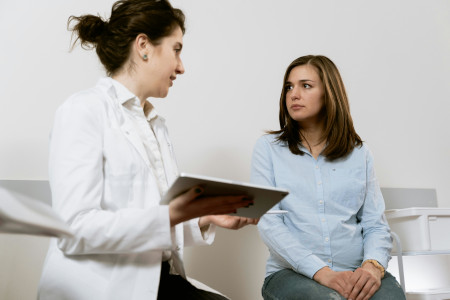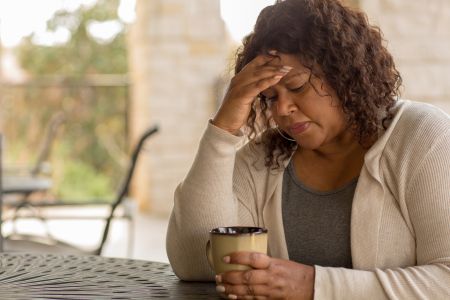Treatment Options for Vaginal Atrophy
Several treatments are available to help manage and reverse the symptoms of vaginal atrophy, ranging from lifestyle adjustments to medical therapies. Each option has benefits and effectiveness, depending on individual needs and preferences.
1. Lifestyle Changes and Home Remedies
Sometimes, simple lifestyle adjustments can make a difference:
- Increase hydration: Drinking more water helps improve overall moisture levels in the body, including the vaginal tissue.
- Quit smoking: Quitting smoking can improve blood flow and enhance tissue health.
- Wear breathable underwear: Choosing cotton underwear helps reduce irritation and moisture buildup.
These basic changes are the first step in managing symptoms, but they may not be sufficient for everyone.
2. Lubricants and Moisturizers
Over-the-counter vaginal lubricants and moisturizers are a popular first-line solution for managing dryness:
- Lubricants provide temporary relief, especially useful for those experiencing pain during intercourse. Opt for water-based or silicone-based options, as they are less irritating than oil-based products.
- Moisturizers help maintain moisture in the vaginal tissue and can be used daily for lasting relief.
While these products don’t address the underlying cause, they can ease discomfort significantly.
3. Estrogen Therapy
One of the most effective treatments for reversing vaginal atrophy is estrogen therapy, which comes in several forms:
- Topical Estrogen Creams: Applied directly to the vaginal area, estrogen creams are absorbed locally, increasing moisture and elasticity in the vaginal tissue.
- Estrogen Rings: Small, flexible rings inserted into the vagina release a steady dose of estrogen. They are convenient and only need to be replaced every three months.
- Estrogen Tablets: Vaginal tablets are inserted with an applicator and provide localized relief from dryness and discomfort.
Local estrogen therapy is generally effective for reversing symptoms without a high risk of systemic side effects, as it mostly stays within the vaginal area. However, it’s important to consult a healthcare provider, especially if there’s a history of hormone-sensitive conditions.
4. Hormone Replacement Therapy (HRT)
For women with severe symptoms or additional menopausal concerns, hormone replacement therapy (HRT) might be an option. HRT involves taking estrogen in pill form or through a patch to manage both vaginal atrophy and other menopause-related symptoms, like hot flashes and mood swings.
However, HRT comes with potential risks, including an increased risk of blood clots, stroke, and certain cancers. It’s typically recommended only when the benefits outweigh the risks and after discussing all options with a doctor.
5. Non-Hormonal Treatments
For those who prefer to avoid hormones, several non-hormonal options are available:
- Ospemifene: An FDA-approved oral medication, ospemifene acts on estrogen receptors to increase moisture in vaginal tissue without introducing estrogen directly.
- DHEA (Prasterone): Vaginal inserts that contain dehydroepiandrosterone (DHEA) may help restore vaginal health by stimulating estrogen production within the tissue itself.
These non-hormonal options can be effective, though they may take several weeks to provide noticeable relief.
Innovative Therapies: Laser and Radiofrequency Treatments
Laser and radiofrequency therapies are options for women with vaginal atrophy:
- Laser Therapy (e.g., CO2 or Erbium YAG lasers): Laser therapy stimulates collagen production, helping to thicken and hydrate vaginal walls. It’s a minimally invasive procedure and typically requires three sessions for optimal results.
- Radiofrequency Therapy: Radiofrequency devices deliver controlled heat to the vaginal tissue, promoting elasticity and hydration.
These therapies can be costly and usually not covered by insurance, but they offer a hormone-free option. However, the FDA has considered many to be unsafe, non-regulated, or making false claims, so be careful. Other devices, such as red-light therapy and ultrasound, work by bringing blood flow to the area to heal tissues.
Pelvic Floor Therapy and Devices
Strengthening the pelvic floor muscles can also play a role in managing symptoms of vaginal atrophy especially if urinary incontinence is present. Pelvic floor exercises help improve circulation and tissue health in the vaginal area.
Elitone Device: A Non-Invasive Pelvic Floor Solution
The Elitone device is a notable tool designed to strengthen the pelvic floor muscles, providing a solution for women experiencing incontinence or weakened pelvic muscles due to vaginal atrophy. The device uses gentle electrical stimulation to encourage muscle contractions, which can enhance pelvic strength and reduce leakage issues.
Regarding reversing vaginal atrophy, Elitone works by bringing blood flow via exercise to the tissues and muscles in the vaginal area and specifically reverses atrophy by strengthening the pelvic floor muscles in the vaginal area.
Taking these steps before or as soon as menopause starts can help minimize the severity of vaginal atrophy symptoms.
Final Words
So, can vaginal atrophy be reversed? The answer is a hopeful “yes” for many women. With various treatment options available from lifestyle changes and estrogen therapies to modern devices like the Elitone managing and even reversing symptoms is within reach. While each person’s journey with vaginal atrophy is unique, seeking advice from a healthcare provider can help tailor the best approach for individual needs.
With the right support, it’s possible to regain comfort, confidence, and control, allowing women to thrive at every stage of life.
FAQs
- Can lifestyle changes alone reverse vaginal atrophy? Lifestyle changes can help reduce symptoms but may not be enough to reverse vaginal atrophy completely. They’re often most effective when combined with other treatments.
- Are laser treatments for vaginal atrophy safe? Yes, laser treatments are generally safe and FDA-approved for vaginal atrophy. They should be administered by trained professionals.
- How long does it take to see results from estrogen therapy? Results vary, but many women notice improvements within a few weeks. Complete relief may take a few months.
- Can I use the Elitone device at home? Yes, Elitone is a non-invasive device designed for home use, making it a convenient option for pelvic floor strengthening.
- Are natural remedies effective for severe vaginal atrophy? Natural remedies may offer some relief for mild symptoms, but they are typically less effective for severe vaginal atrophy and should be considered.
References:
Domoney, C., 2014. Treatment of vaginal atrophy. Women’s Health, 10(2), pp.191-200.
Johnston, S.L., Farrell, S.A., Bouchard, C., Farrell, S.A., Beckerson, L.A., Comeau, M., Johnston, S.L., Lefebvre, G. and Papaioannou, A., 2004. The detection and management of vaginal atrophy. J Obstet Gynaecol Can, 26(5), pp.503-15.
Stika, C.S., 2010. Atrophic vaginitis. Dermatologic therapy, 23(5), pp.514-522.











